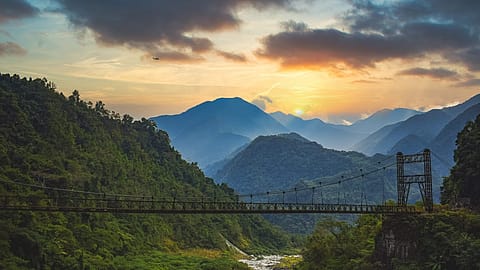Northeast: The frontier for India’s energy secure future
This region contributes about 13% of the nation’s crude oil and 16% of its natural gas output, playing a vital role in bridging the country’s growing energy needs.

India stands at a critical juncture in its pursuit of energy independence, and is, refocusing its attention on the northeast region, which is both necessary and strategic. This region contributes about 13% of the nation’s crude oil and 16% of its natural gas output, playing a vital role in bridging the country’s growing energy needs. Yet, its contribution remains sub-optimal, given the vast untapped potential of the region amidst the increasing demand for fossil fuel.
The North East is estimated to hold more than 18% of the nation’s total hydrocarbon resources, with vast areas remaining untapped. Scaling up hydrocarbon exploration and production (E&P) in the region will not only serve to bolster domestic output, reduce the country’s import dependence but also boost economic growth.
The Undiscovered Basin of India
The expansive northeast region has two sedimentary basins – Upper Assam Shelf and Assam-Arakan Basin, covering an area of 136,825 sq. km. The former includes the oldest Digboi reserve, where the first ever discovery happened in the 19th Century, and still remains a major contributor to India’s oil and gas production. The Assam–Arakan basin, spanning the hilly terrains of Assam, Arunachal, Nagaland, Manipur, Mizoram, and Tripura—is a well-established natural gas province, with major gas flows emerging from Tripura and fields such as Dirok and Fenchuganj. Yet only 10% of the basin has been explored.
As per the 2021 data, both basins account for an estimated 55 billion barrels of oil equivalent (bnboe), with only ~15 bnboe discovered so far, leaving ample opportunities for increased E&P activities by both domestic and global players, unlocking new avenues for investment and development in the region. The discovery of this unconventional source of energy could be a game changer for the nation’s energy economy, making the northeast a dominant hydrocarbon hub of India.
Several leading public and private sector enterprises have established a strong presence in Northeast India, recognising the region’s untapped potential and strategic importance. Companies such as Oil and Natural Gas Corporation (ONGC), Oil India Limited (OIL), Cairn Oil & Gas (Vedanta Limited) have long-standing operations in exploration and production of hydrocarbons, particularly in Assam and Tripura.
Additionally, infrastructure and power companies are expanding their footprint across sectors including hydropower, logistics, and telecom, supported by improved connectivity and policy incentives. These investments not only contribute to regional economic development but also integrate the Northeast more deeply into India’s growth narrative.
Recommended Stories
Barriers on the Path to Recovery
Despite its vast potential in terms of hydrocarbon resources, and one of the first sites for fossil fuel exploration and production, the region’s output is limited because of geographical constraints. The rugged terrain and large forest cover make it extensively challenging to capture and process seismic data in fold belts, resulting in unclear image that hinders precise identification of hydrocarbon reserves beneath the earth’s surface.
While environmental and geographical barriers are beyond direct control, they can still be navigated to some extent through the adoption of advanced exploration technologies, strategic infrastructure development and innovative connectivity solutions.
In terms of connectivity and infrastructure, the government’s Hydrocarbon Vision 2030 for Northeast has contributed to significant improvements in the region over the past decade. By bridging the infrastructure gap, setting up a service provider hub, and ensuring adequate evacuation infrastructure, the northeast is steadily being transformed into an attractive investment destination for E&P companies.
(INR CR)
Further policies such as the Hydrocarbon Exploration and Licensing Policy (HELP) can be credited for streamlining exploration activities in the past few years.
The new supportive policy
As India progress in the E&P Atmanirbhartha trajectory, the “Draft Petroleum and Natural Gas Rules, 2025”, announced by the government recently, is a positive step towards collaboration between the government and private sector. Increased participation of private players will help introduce advanced and innovative technologies in the region for exploration and production.
The northeast region embodies wealth and abundance in the form of hydrocarbons and other minerals. With sustained investment, development and strategic integration into India’s broader energy ambitions, the region can potentially emerge as a vital contributor to the nation’s energy security and economic growth.
Views are personal. Author is Chief Financial Officer, Cairn Oil & Gas, Vedanta Ltd.